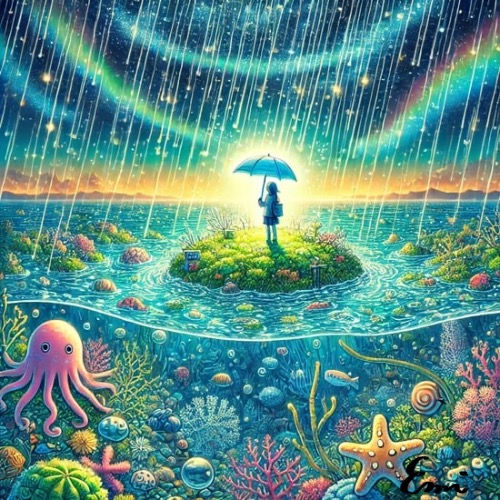Archaeological Swamps and Burial Mounds: Discovered in Tokushima! Keyhole-shaped burial mounds tell the magnificent history of the Yayoi period
- Emi | Kenshirou Siba Labo

- Jan 12, 2025
- 4 min read
Ancient tomb discovered! Questions I asked when I heard the news
That's too sudden.
I thought the same thing.
This was the question I asked my archaeology professor within five minutes of meeting him for the first time.
"Honestly, is there anything interesting about the burial mounds?"
Rather than getting angry at my extremely rude question, the teacher and I had a great time afterwards.
First of all, why ancient tombs?
A keyhole-shaped tumulus was discovered in Kaiyo Town, Tokushima Prefecture. Some of you may already know about this, as it was national news.
The director of Kaiyo Town Museum and other curators have been scrambling every day to deal with the situation.
After all, it is a major discovery that could "change the facts recorded in history textbooks."
I was also told about the ancient tomb that was discovered.
The shapes of burial mounds vary depending on the era in which they were built.
What was discovered this time is the tomb of a prominent figure from the transition from the Yayoi period to the Kofun period, and is said to be a special tomb that could only have been built by someone close to the Yamato court.
Yeah, I know that’s amazing.
But how many people in Japan can imagine the romance of the Yayoi period and ancient tombs?
The fascinating nature of the Yayoi period has professionals in the field obsessed with it for the rest of their lives.
If you can tell me, I'd love to know!
Isn't the Yayoi period a bit dull?
I explained it strongly to the teacher.
For example, the Sengoku period and the Jomon period are relatively easy to imagine.
There are many novels and dramas themed around warlords, and the Jomon period is said to be the happiest and most ideal period in history, when people lived in harmony with nature and pottery.
In foreign countries, for example, ancient Egypt has a famous girls' manga.
However, when it comes to the Yayoi period, we cannot escape from the textbook knowledge that "rice cultivation began, settlements were formed, and a country was established."
If I look, I can find books that explain their lifestyle and culture, but that's not what I want to know.
So I asked.
The scale of the Yayoi period linked to the "Romance of the Three Kingdoms"
The answer was unexpected.
The teacher's talk began with, "Do you know about the Romance of the Three Kingdoms?" The Yayoi period was on a grand scale.
First of all, it seems that the Yayoi people's worldview was "themselves vs. the continent."
This was by no means an era when settlements that had emerged with the introduction of rice cultivation across the Japanese archipelago were merely engaged in skirmishes between each other.
The main focus is foreign policy.
It was a time when people banded together to overcome the threat of possible invasion from the continent.
Why was the continent such a threat?
That's because it was during the Three Kingdoms period, when Cao Cao, Liu Bei, and Sun Quan fought for power on the Chinese mainland.
Kyushu is located very close to Korea and the mainland, and a huge power like Cao Cao was rapidly expanding his territory.
This is scary.
When the rumor reached the Japanese archipelago, people must have thought:
"Eh, isn't that a bit dangerous?"
"Let's all get together for now. We need to create a country and join forces!"
The Three Kingdoms vs. the Yayoi people. What would have happened if they had fought honestly?
In this way, for the first time, a sense of "nationhood" began to emerge in the Japanese archipelago, and people began to come together to counter threats from outside.
Among them, Himiko was chosen as the representative, which marked the beginning of the Kofun period and the birth of the Yamato court.
Were keyhole-shaped tumuli a sign of friendship?
So what are ancient tombs?
To put it simply, it's like a modern logo or team sticker, a symbol of camaraderie.
"Would you like to join us? Then we'll let you build this special shaped burial mound for us!"
So, it seems that it served as a symbol of the connections between settlements and countries.
The newly discovered keyhole-shaped tumulus in Kaiyo Town
"We are part of this force too!"
If they represent territory, then our previous understanding of diplomacy and the power balance at the time would change.
And here comes another interesting point: the decision-making of each village.
The fate of each village will be decided by their decision to join or not. Which village made which decision and how did it turn out?
This means that Kaiyo Town in the Yayoi period chose to become an ally of a larger power.
Hearing this, it becomes clear that this was a turbulent time and cannot be summed up as simply a matter of cultivating rice and making pottery.
Conclusion: The Yayoi period was filled with grand romance!
This encounter completely changed my image of the Yayoi period.
I was so excited listening to the teacher's talk.
Anyway, that's what I want to say!
"Thank you for your hard work, Yayoi-to!"
Without your efforts, Murasaki Shikibu would not have written The Tale of Genji, Tokugawa Ieyasu would not have created the Edo period, and Japan might have been a completely different place than it is today.
With this new encounter, I began to think that it might be interesting to dip my toe into the world of archaeology.
Note: The illustrations are for illustrative purposes only.




Comments